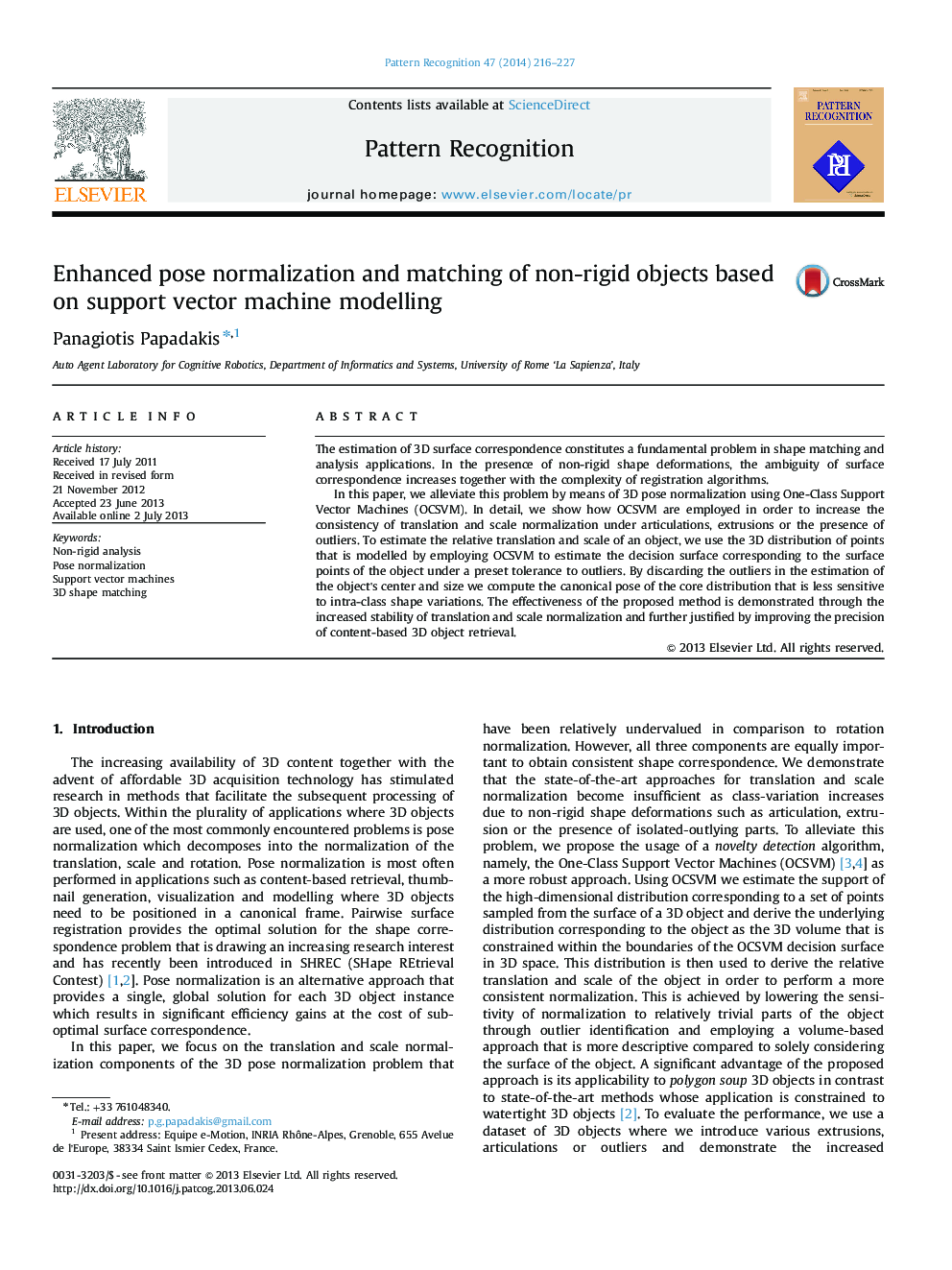| Article ID | Journal | Published Year | Pages | File Type |
|---|---|---|---|---|
| 532117 | Pattern Recognition | 2014 | 12 Pages |
•We improve non-rigid surface correspondence by robust computing of the canonical pose.•The relative translation and scale are computed by discarding shape outliers by SVMs.•The improved surface correspondence in turn improves content-based retrieval.•The improved pose normalization can be employed with any 3D shape descriptor.
The estimation of 3D surface correspondence constitutes a fundamental problem in shape matching and analysis applications. In the presence of non-rigid shape deformations, the ambiguity of surface correspondence increases together with the complexity of registration algorithms.In this paper, we alleviate this problem by means of 3D pose normalization using One-Class Support Vector Machines (OCSVM). In detail, we show how OCSVM are employed in order to increase the consistency of translation and scale normalization under articulations, extrusions or the presence of outliers. To estimate the relative translation and scale of an object, we use the 3D distribution of points that is modelled by employing OCSVM to estimate the decision surface corresponding to the surface points of the object under a preset tolerance to outliers. By discarding the outliers in the estimation of the object's center and size we compute the canonical pose of the core distribution that is less sensitive to intra-class shape variations. The effectiveness of the proposed method is demonstrated through the increased stability of translation and scale normalization and further justified by improving the precision of content-based 3D object retrieval.
